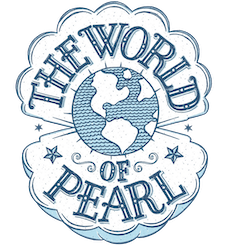Thanks for all your emails! Here is more on pearl processing versus pearl treatments:
Hi Pearl Girls, this is Michael and I have been interested in pearls to give as a gift and stumbled upon your youtube video “See A Pearl Farm in China by The Pearl Girls”.
I recently bought a pearl from an online retailer and a certificate of authenticity came along with it that guarantees that their pearls have never been dyed or treated in any way, shape or form.
However, your video shows that after harvest, pearls undergo various treatments (tumbling, heating, and polishing) to optimize its color and luster. So if most, if not all, pearls undergo treatments to enhance pearls’ luster and color, then are those companies that are handing out certificates stating that their pearls have never been dyed or treated any way deceiving? Or is it that their statements refer to some other enhancements or treatments?
Thank you so much! I really appreciate your help, I checked out your website and love what you are doing.
Michael

Hi Michael!
Thanks for reaching out! Every pearl producer does something to their pearls after harvest and before selling them. Now, it might be as simple as simply washing the pearls. In Mexico, they clean their pearls then rub them with mineral oil. In Tahiti they will rub the pearls with salt and occasionally buff them. These are called post harvest processing. So, it is safe to say all pearl farms do some sort of processing. To what extent this processing is depends on the pearl farm. Now, there is a huge debate between processing and treatment. Treatments are usually done to improve the appearance of lower quality pearls. So, many pearl sellers are against enhancing lower quality pearls. But, what is treatment and what is simply processing? That is the debate.
The current accepted understanding is that Chinese and Japanese pearls are sorted, drilled, bleached, sometimes tinted (this used to happen more with Japanese pearls), buffed and then matched and strung. These are all part of post-production processing. So, if you purchased Chinese or Japanese pearls, they most likely have gone through this process (highlighted in the video) but the industry accepts that this in processing, not treatment. Treatments would include irradiation, coating, dying or other processes which try to alter the look of pearls. The key here is that treatments are usually classified as an enhancement that alter the look the pearl but are not permanent. Such as pearls that are dyed, they can fade over time. Coating can rub off. The problem is, of course, what is considered processing may not be permanent also. Polished or buffed pearls can fade over time. But, that opens up a larger debate…
Many other pearl manufacturers (not from Japan or China) process their pearls by washing and doing some sort of polishing. Again, this is not considered a treatment, simply processing.
As for your pearls and the included certificate, yes, these pearls may have gone through some of these post production practices and still not be considered treated.
So, yes, your pearls most likely were not treated in any way but, depending upon where they came from, they may have been processed the way the pearls were in my video.
Any more questions, let me know!
Best,
India
I am a modern day treasure hunter who travels the world for gorgeous pearls and amazing adventures. I own a pearl jewelry and jewelry repair business, ThePearlGirls.com, with a cute retail store in Athens, GA. I also have a Pearl Travel business and travel blog at TheWorldofPearl.com.


